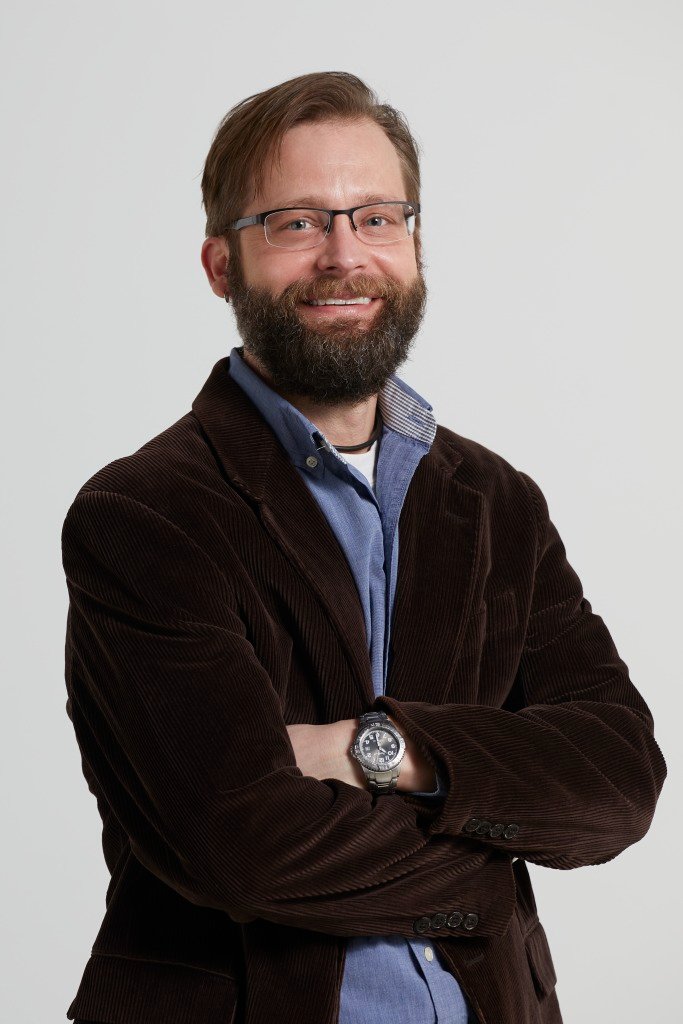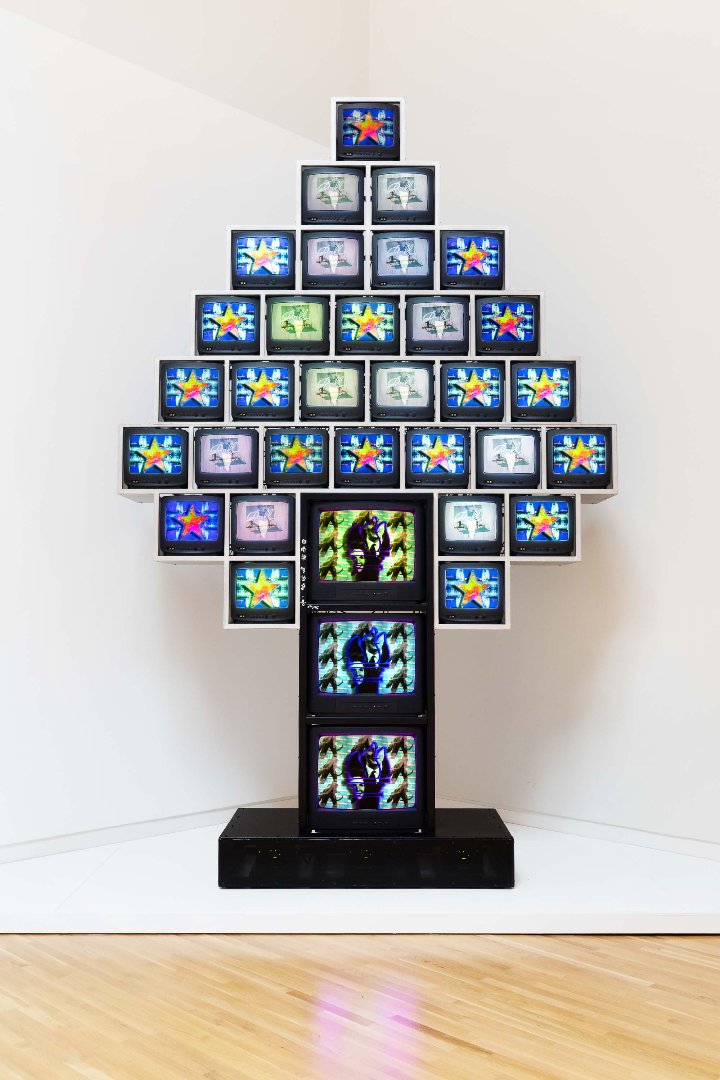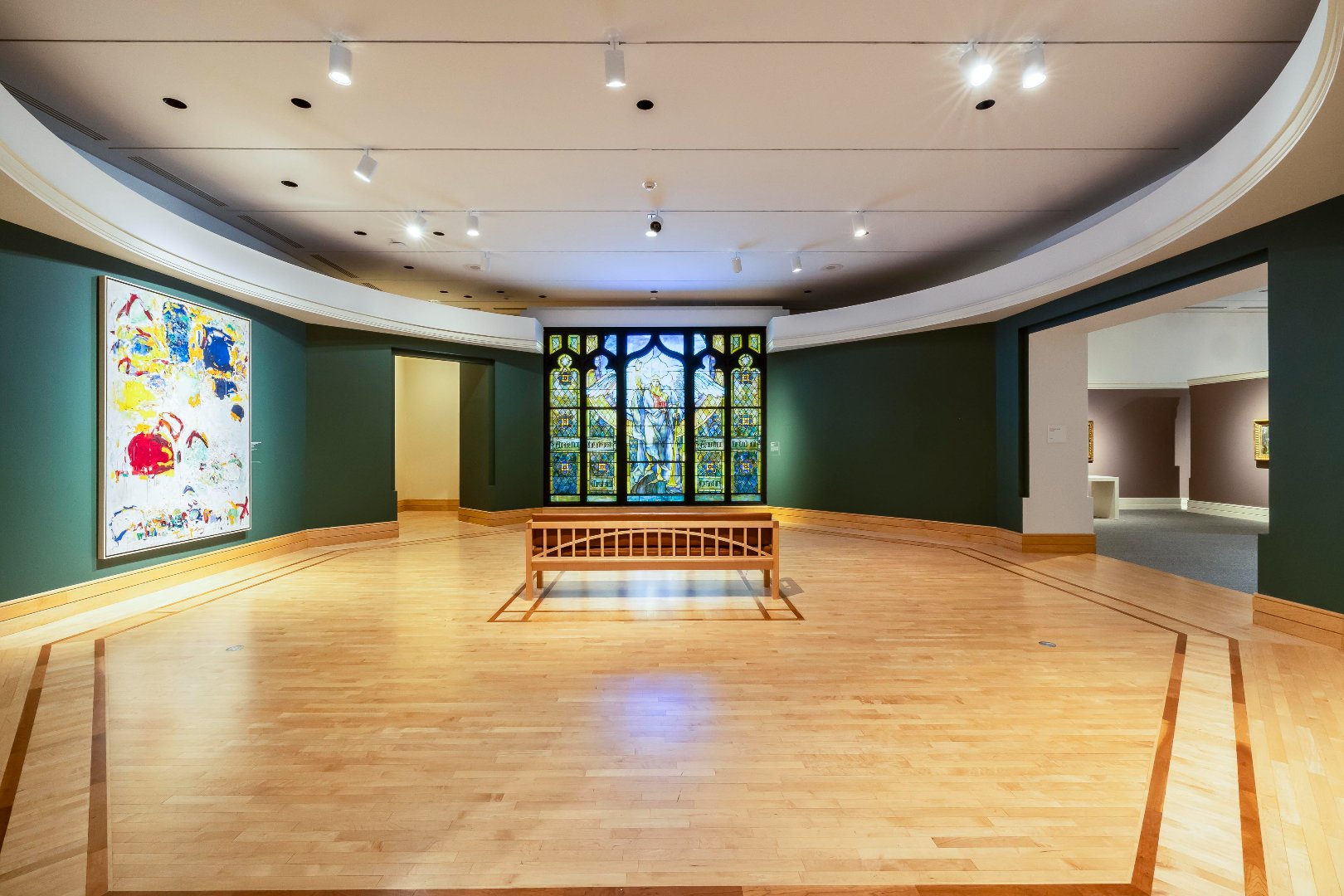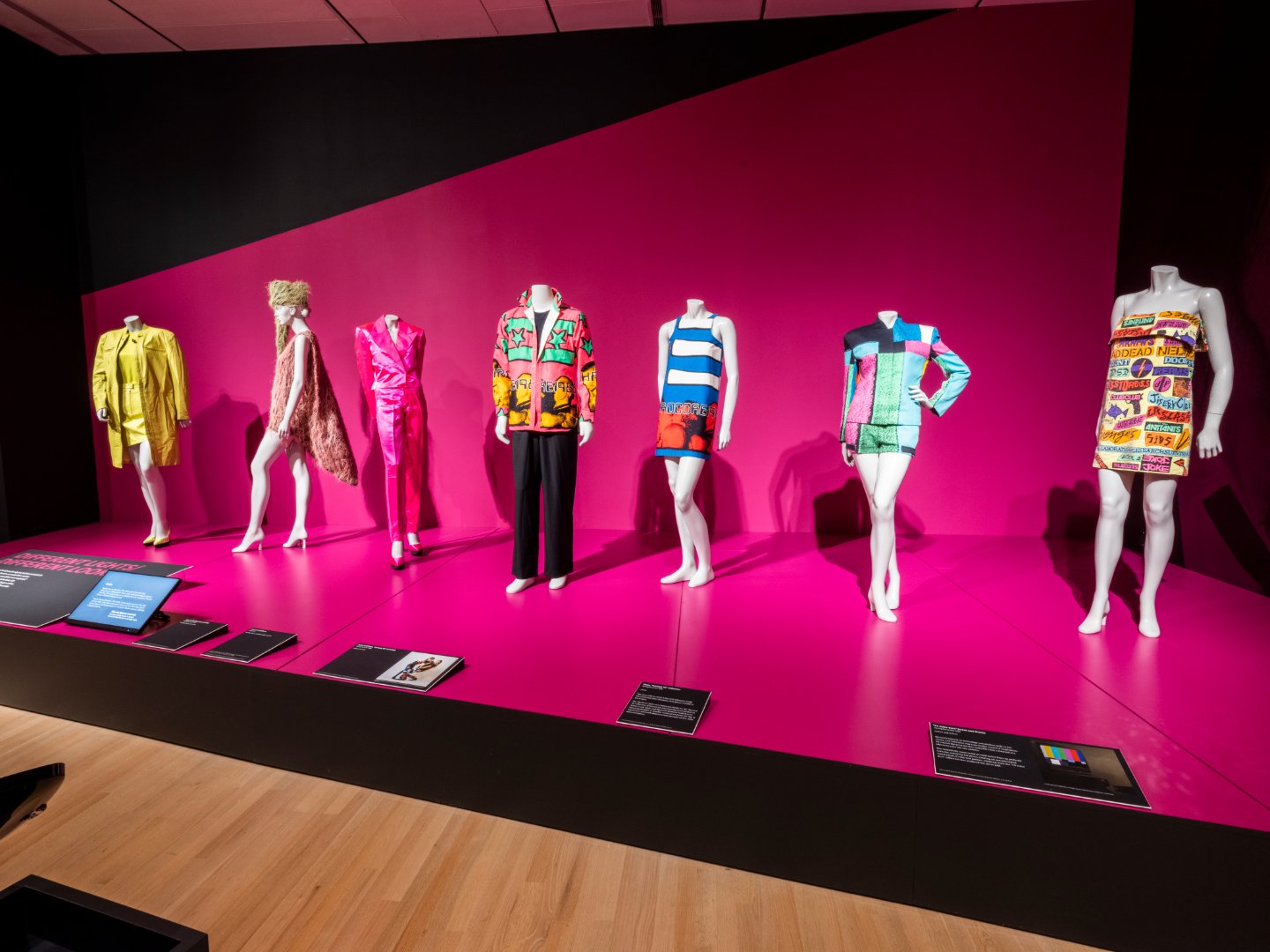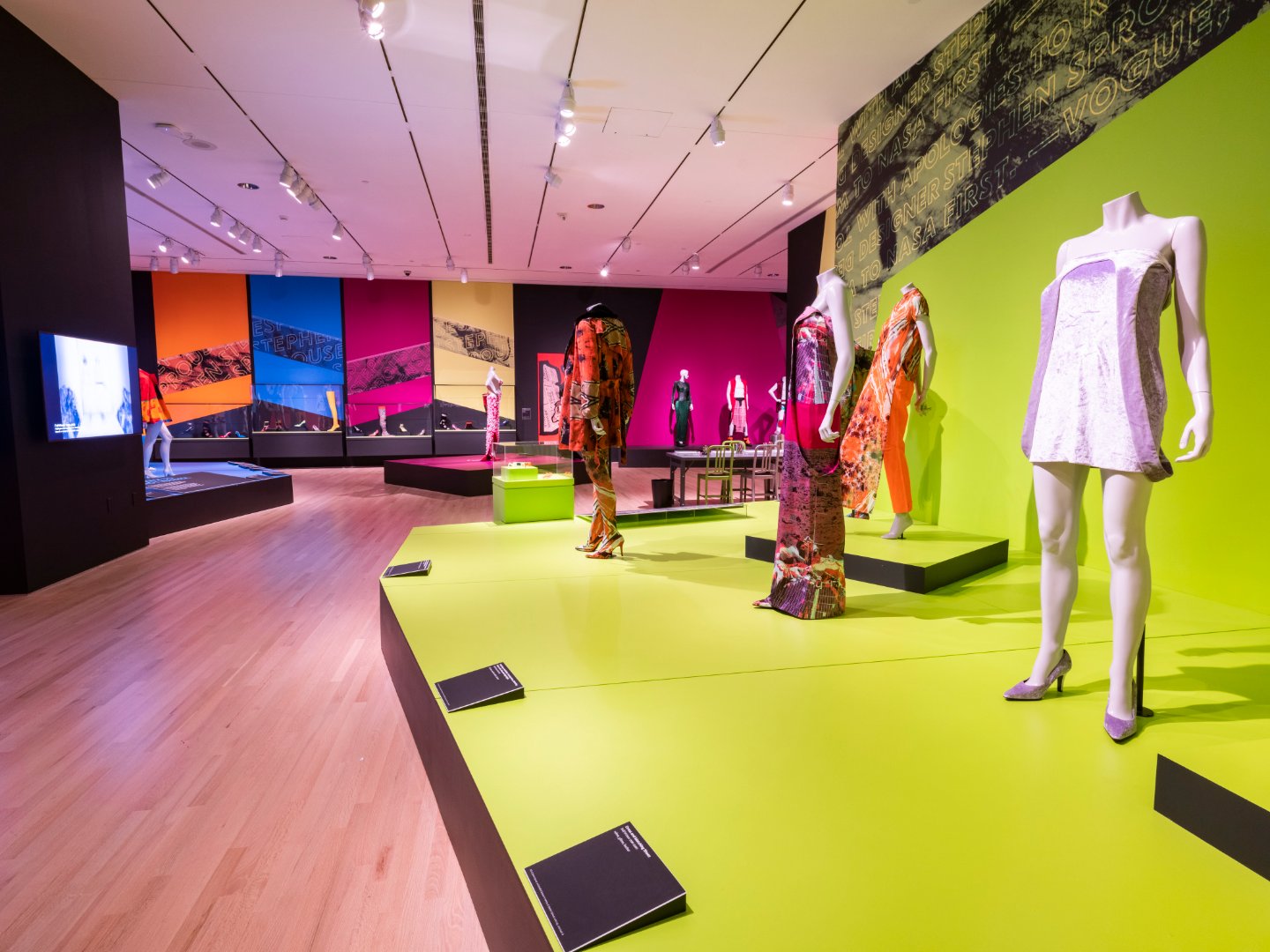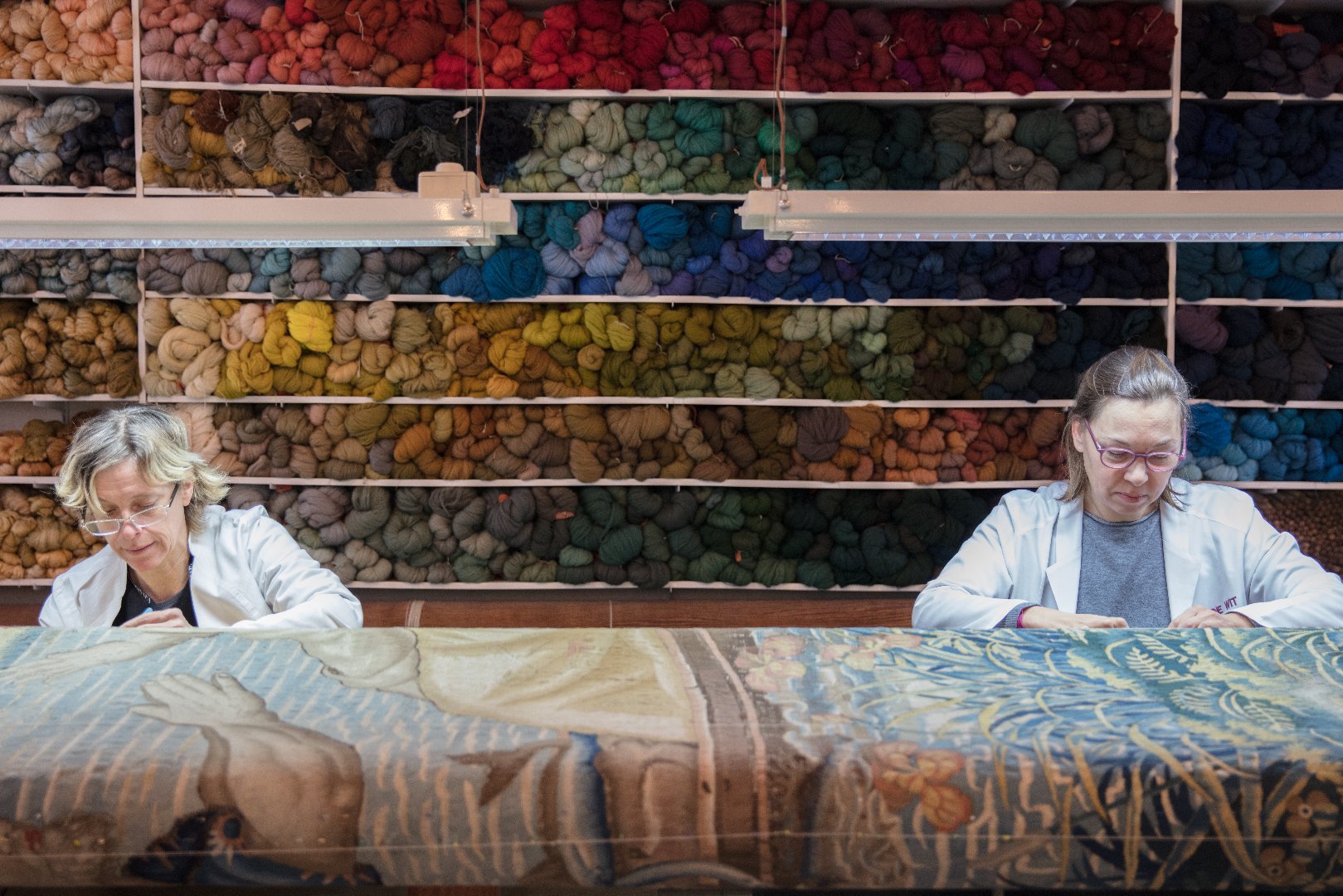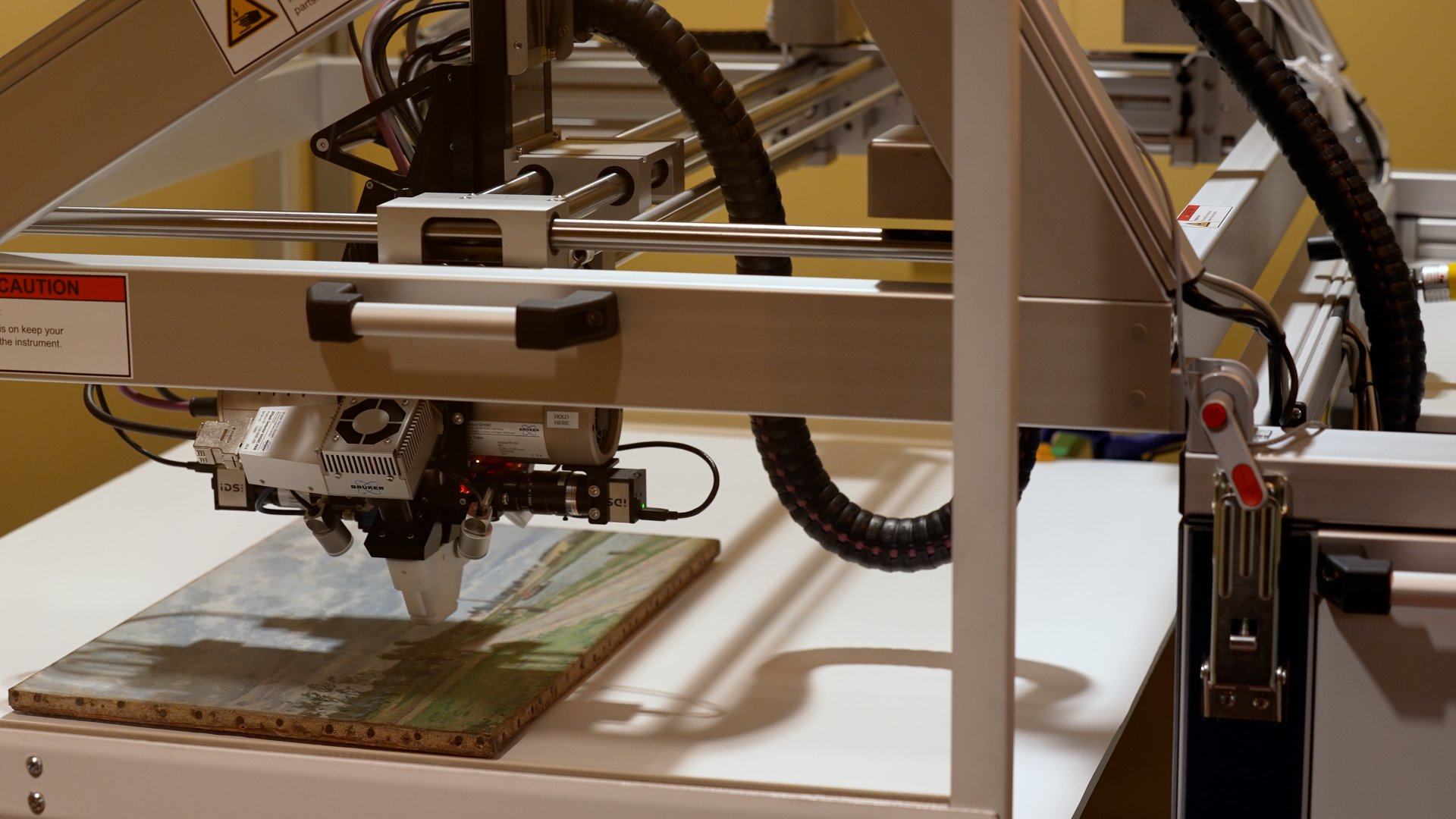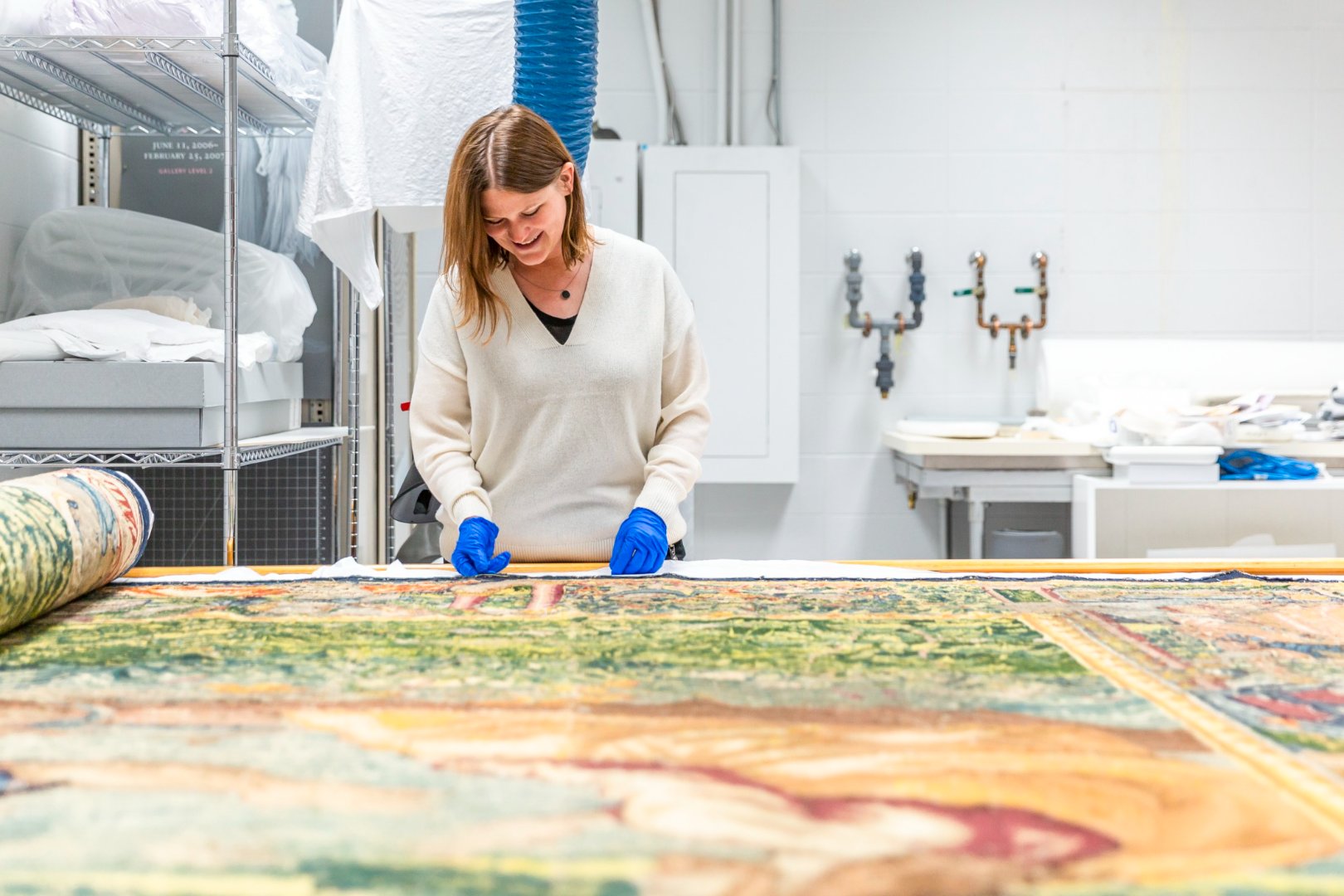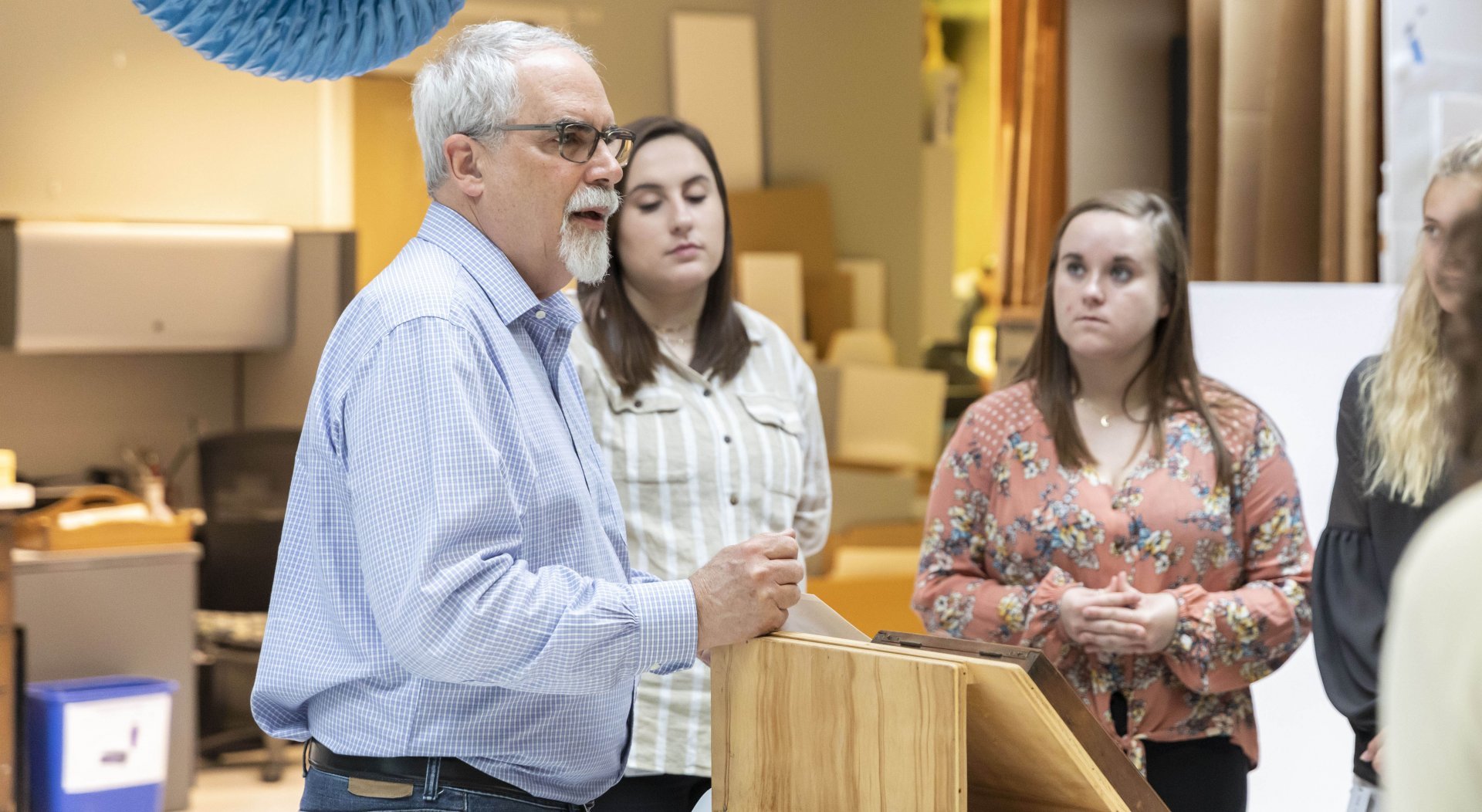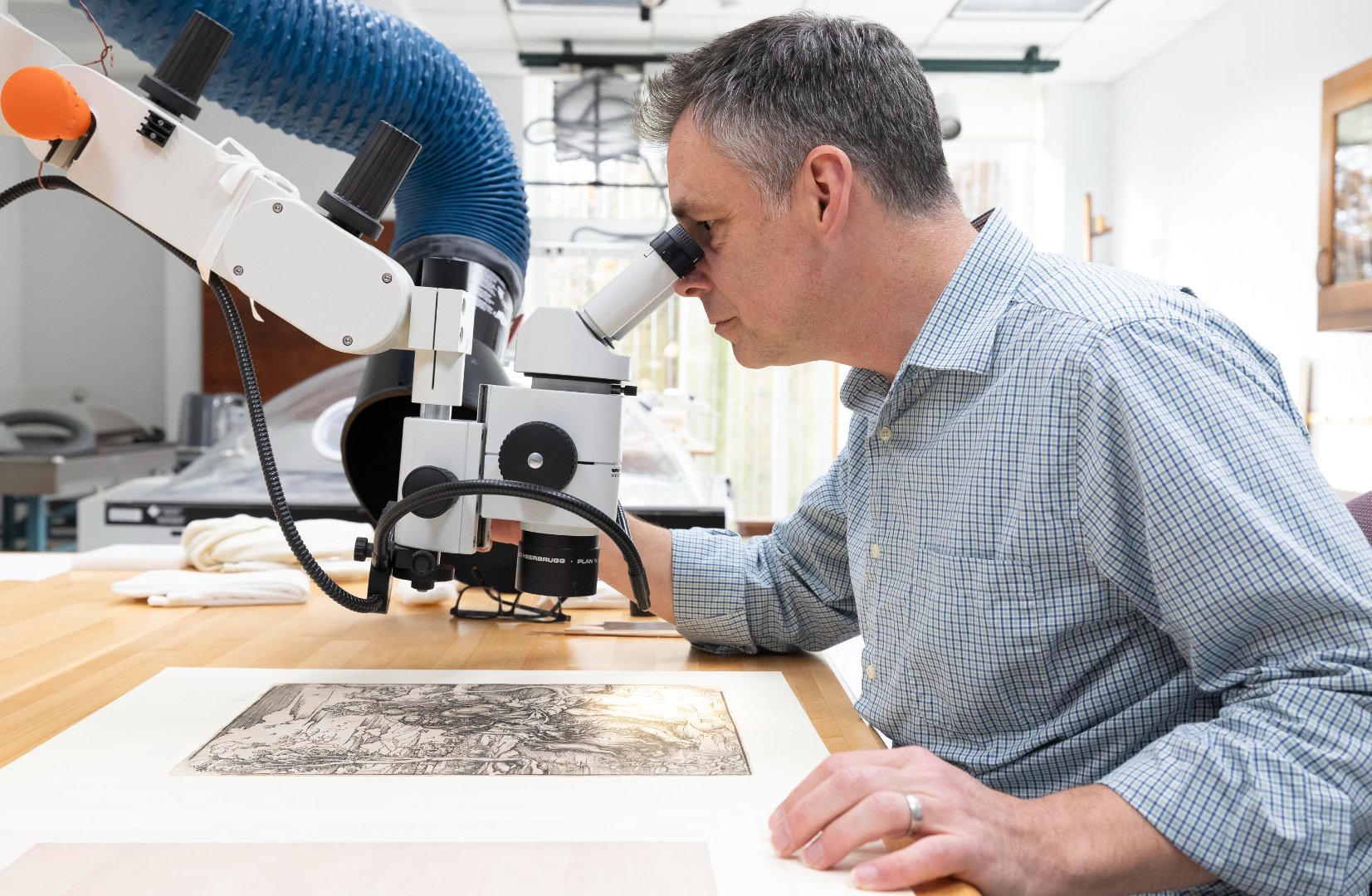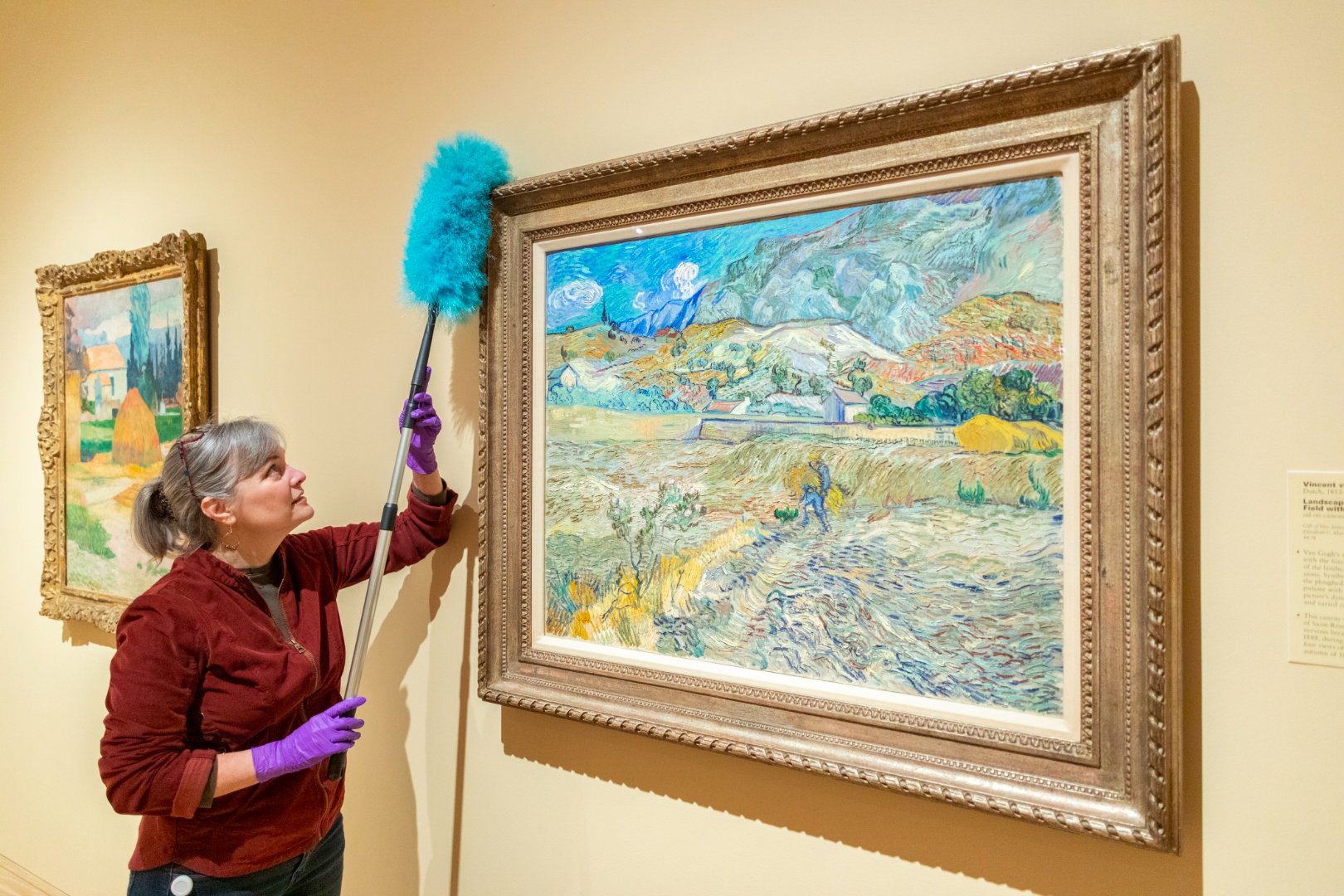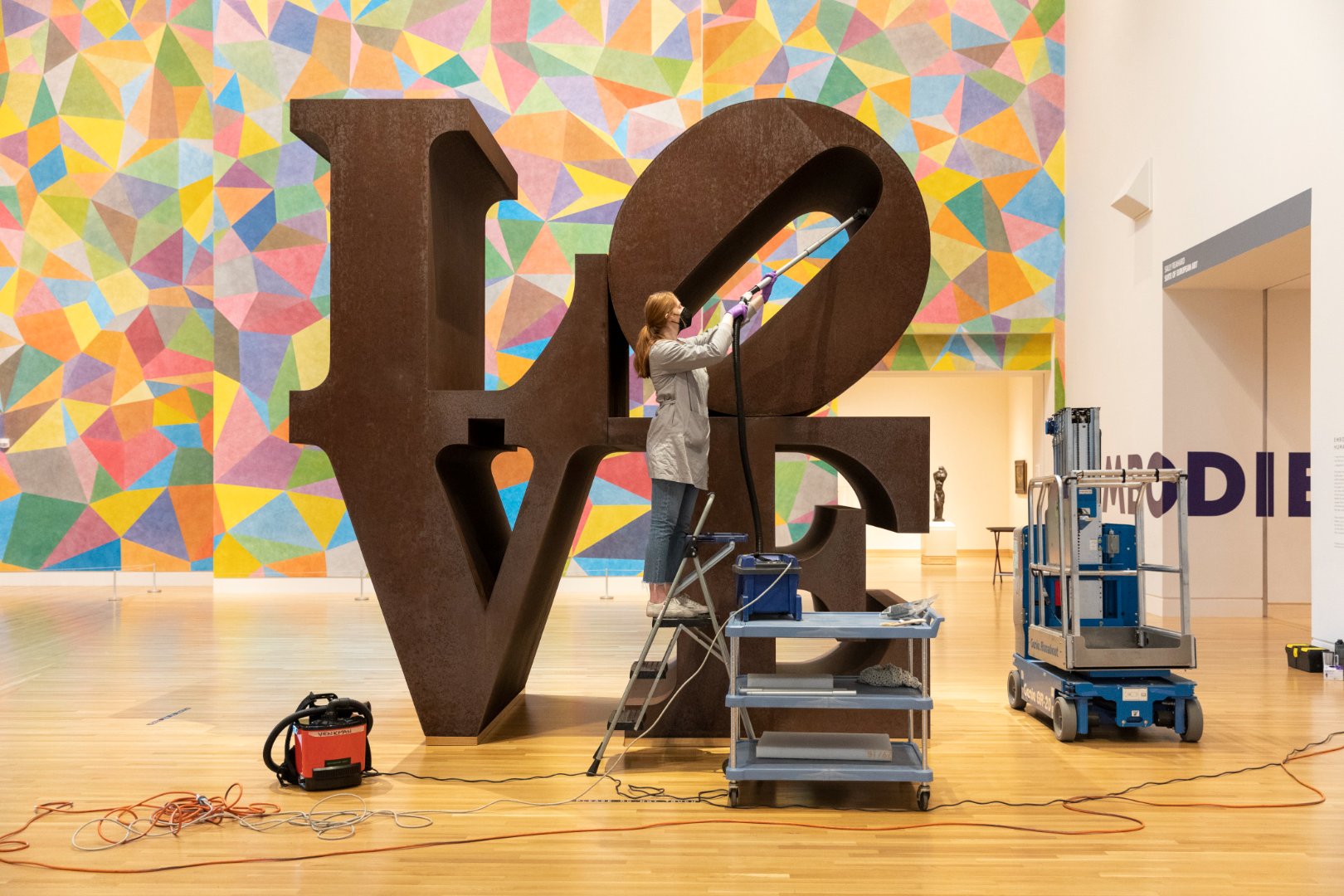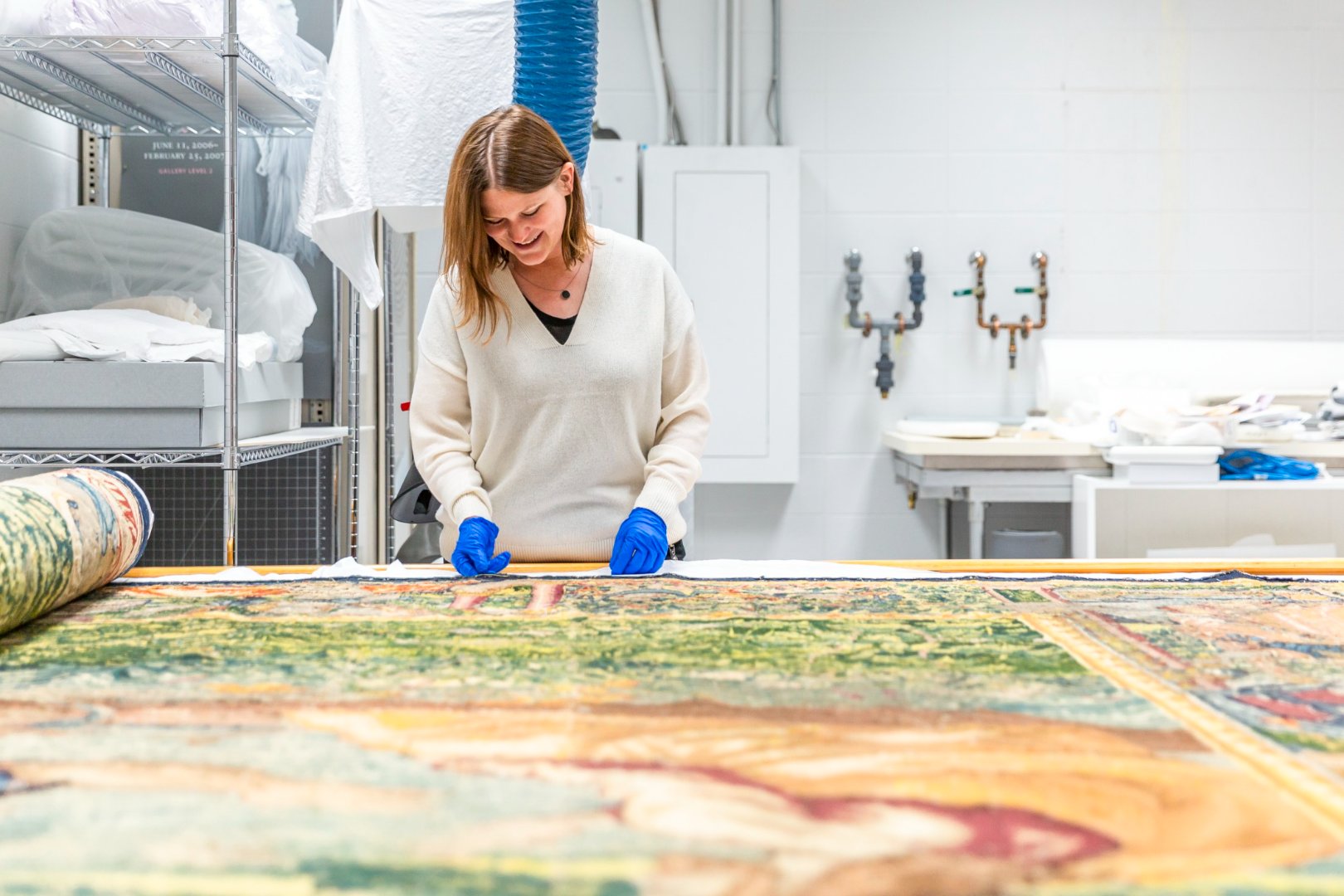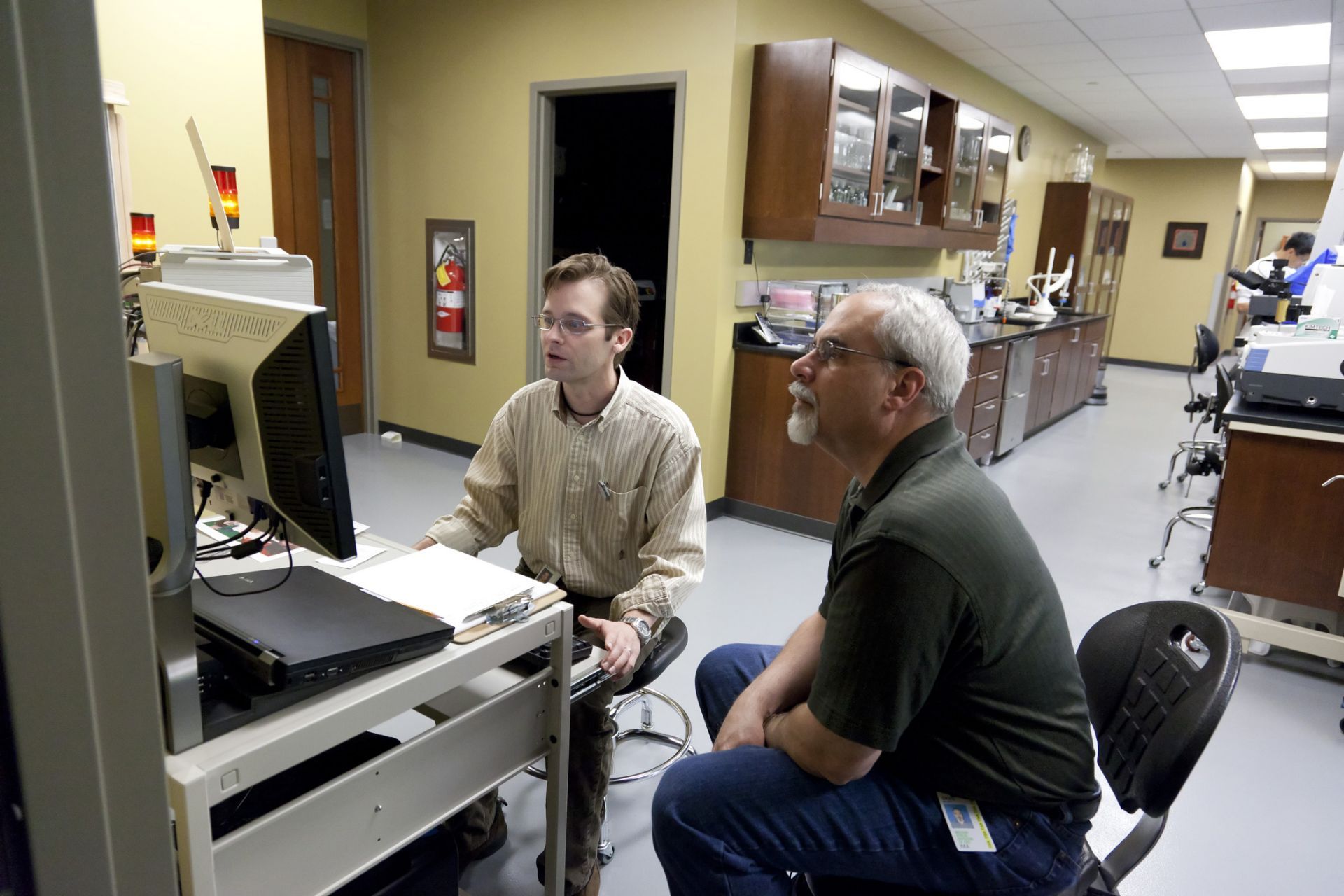The Indianapolis Museum of Art at Newfields has a conservation staff that conserves, maintains, preserves, and researches the Museum’s collection while adhering to national and international codes of ethics and care.
Conservators and conservation scientists are professionals with advanced training in art history, science, studio art, and related fields with exceptional expertise in their area of specialization.
Our dedicated team ensures we meet our mission to enrich lives through exceptional experiences with art and nature and aids our commitment to stewardship, excellence, and more.
The Department is staffed by conservators with specializations in paintings, works on paper, textiles & fashion, and objects & variable art, as well as a conservation specialist, conservation technician, an administrative coordinator, and a chief conservator.
The IMA Conservation Department is housed in a 7,700-square-foot laboratory in the Museum’s main building. The lab was founded in 1970, since the Museum has been in its current location at 38th and Michigan.
The IMA Conservation Science Department is housed in a 3,000 square foot state-of-the-art analytical and research laboratory for the study of artists’ materials that was founded in 2010.
As grant and donor funding allows, the Conservation and Conservation Science departments periodically take on interns, fellows, and postgraduates for various opportunities. Any available opportunities can be found on the Newfields Jobs Page.
Corneille de Lyon (Netherlandish, active in France, 1500/1510–1575), Portrait of René du Puy du Fou (detail), about 1550, oil on wood panel, transferred to canvas, 6-11/16 × 5-7/16 in. (panel); 9-5/8 × 8-3/8 × 1-5/8 in. (framed). Indianapolis Museum of Art at Newfields, The Clowes Collection, 2014.86.
Vincent van Gogh (Dutch, 1853–1890), Landscape at Saint-Rémy (Enclosed Field with Peasant), 1889, oil on canvas, 30 × 37-1/2 in. (canvas); 39-1/2 × 46-7/8 × 4-1/4 in. (framed, Optium), Indianapolis Museum of Art at Newfields, Gift of Mrs. James W. Fesler in memory of Daniel W. and Elizabeth C. Marmon, 44.74.
Paul Gauguin (French, 1848–1903), Landscape near Arles (detail), 1888, oil on canvas, 36 × 28-1/2 in. (canvas); 3 × 35-3/4 × 3 in. (framed, Optium). Indianapolis Museum of Art at Newfields, Gift in memory of William Ray Adams, 44.10.
Robert Indiana (American, 1928–2018) and Lippincott, LLC (American), Love (detail), 1970, Cor-ten steel, 144 × 144 × 72 in. Indianapolis Museum of Art at Newfields, Gift of the Friends of the Indianapolis Museum of Art in memory of Henry F. DeBoest. Restoration was made possible by Patricia J. and James E. LaCrosse., 75.174. © 2024 Morgan Art Foundation / Artists Rights Society (ARS), NY.
Sol LeWitt (American, 1928–2007), Wall Drawing No. 652, Continuous Forms With Color Acrylic Washes Superimposed (detail), 1990, Lascaux acrylic wash on wall, 30 × 60 ft. Indianapolis Museum of Art at Newfields, Gift of the Dudley Sutphin Family, 1990.40. © 2024 The LeWitt Estate/Artists Rights Society (ARS), NY.
Hendrik Mattens (Flemish, –1670) after Raphael (Italian, 1483–1520), The Miraculous Draught of Fishes (tapestry) (detail), about 1630, wool, 162 -1/4 × 195-1/4 in. Indianapolis Museum of Art at Newfields, The Clowes Collection, 2016.372.





